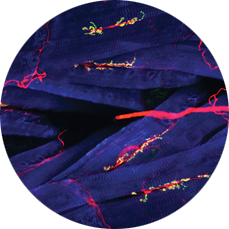 The mission and vision of the Cell Regulation and Development (CRD) Affinity Group is to increase fundamental knowledge of basic molecular mechanisms of cell biology and animal development and enhance understanding of how dysregulation of these processes contributes to human disability and disease.
The mission and vision of the Cell Regulation and Development (CRD) Affinity Group is to increase fundamental knowledge of basic molecular mechanisms of cell biology and animal development and enhance understanding of how dysregulation of these processes contributes to human disability and disease.
By combining expertise in the genetics of model organisms (including yeast, fruit fly, frog, zebrafish, and mouse), cell biology, biochemistry, molecular biology, electrophysiology, biophysics, genomics, and structural biology, members of the Group advance individual research objectives by regularly providing insights and advice to one another and through collaborations enabling synergy in research methods and experimental approaches. These interactions have engendered the development of novel technologies and strategies that underlie past accomplishments and will facilitate future discoveries by the Group in areas including mechanisms of gene expression at the level of transcription, mRNA decay or translation and their perturbations that trigger cellular stress responses, functions and regulation of hormone receptors, mechanisms governing accurate segregation of the genetic information during cell division, mechanisms of nucleocytoplasmic trafficking, mechanisms of transposition and the role of transposable elements in reorganizing the host genome in response to stress, mechanisms governing adult organ formation during postembryonic vertebrate development, and molecular mechanisms of synaptic circuit assembly and function. These efforts are aimed frequently at elucidating the perturbations of fundamental molecular and cellular mechanisms underlying developmental defects and genetic diseases.
Labs within this group:

 BACK TO TOP
BACK TO TOP